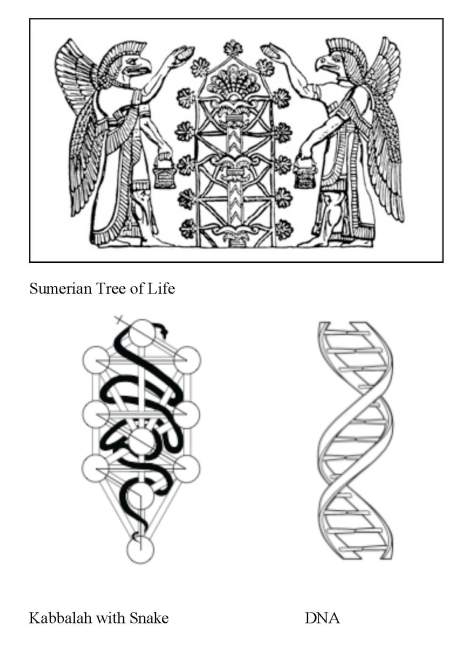
ANUNNAKI
Information about Sumerian history is found on the Sumerian King List as well as Sumerian clay tablets and cylinder seals. In the Sumerian King Lists are mentioned all the rulers of Earth 400,000 years back. This huge period of time of thousands of years has caused most historians to reject its accuracy. However all the early rulers were allegedly gods -- demi-gods or immortals. The Anunnaki (Sumerian: "those who came down from the heavens"; Old testament Hebrew, Anakeim, Nefilim, Elohim; Egyptian: Neter), an advanced civilization from the tenth planet in our solar system, landed in the Persian gulf area around 432,000 years ago, colonized the planet, with the purpose of obtaining large quantities of gold.


Source Wikipedia
Anunnaki
From Wikipedia, the free encyclopedia
This article is about the Sumerian gods. For the role-playing game character, see Demon: The Fallen. For The Anunnaki as depicted in The 12th Planet, see Zecharia Sitchin.
| Part of a series on |
| Ancient Mesopotamian religion |
|---|
| Related topics |
The Anunnaki (also transcribed as: Anunaki, Anunna, Anunnaku, Ananaki and other variations) are a group of deities in ancientMesopotamian cultures (i.e., Sumerian, Akkadian, Assyrian, and Babylonian).[1]
Contents
[hide]Etymology[edit]
The name is variously written "da-nuna", "da-nuna-ke4-ne", or "da-nun-na", meaning "princely offspring" or "offspring of Anu".[1]According to The Oxford Companion to World Mythology, the Anunnaki: "...are the Sumerian deities of the old primordial line; they are chthonic deities of fertility, associated eventually with the underworld, where they became judges. They take their name from the old sky god An (Anu)."[2]
By her consort Anu, Ki gave birth to the Anunnaki, the most prominent of these deities being Enlil, god of the air. According to legends, heaven and earth were once inseparable until Enlil was born; Enlil cleaved heaven and earth in two. Anu carried away heaven. Ki, in company with Enlil, took the earth.
Some authorities question whether Ki was regarded as a deity since there is no evidence of a cult and the name appears only in a limited number of Sumerian creation texts. Samuel Noah Kramer identifies Ki with the Sumerian mother goddess Ninhursag and claims that they were originally the same figure.
Mythology[edit]
Their relation to the group of gods known as the Igigi is unclear – at times the names are used synonymously but in the Atra-Hasisflood myth the Igigi are the sixth generation of the gods who have to work for the Anunnaki, rebelling after 40 days and replaced by the creation of humans.[3]
Jeremy Black and Anthony Green offer a slightly different perspective on the Igigi and the Anunnaki, writing that "lgigu or Igigi is a term introduced in the Old Babylonian Period as a name for the (ten) "great gods". While it sometimes kept that sense in later periods, from Middle Assyrian and Babylonian times on it is generally used to refer to the gods of heaven collectively, just as the term Anunnakku (Anuna) was later used to refer to the gods of the underworld. In the Epic of Creation, it is said that there are 300 lgigu of heaven."[4]
The Anunnaki appear in the Babylonian creation myth, Enuma Elish.[5] In the late version magnifying Marduk, after the creation of mankind, Marduk divides the Anunnaki and assigns them to their proper stations, three hundred in heaven, three hundred on the earth. In gratitude, the Anunnaki, the "Great Gods", built Esagila, the splendid: "They raised high the head of Esagila equaling Apsu. Having built a stage-tower as high as Apsu, they set up in it an abode for Marduk, Enlil, Ea." Then they built their own shrines.[citation needed]
The Anunnaki are mentioned in The Epic of Gilgamesh when Utnapishtim tells the story of the flood. The seven judges of hell are called the Anunnaki, and they set the land aflame as the storm is approaching.[6]
According to later Assyrian and Babylonian myth, the Anunnaki were the children of Anu and Ki, brother and sister gods, themselves the children of Anshar and Kishar (Skypivot and Earthpivot, the Celestial poles), who in turn were the children of Lahamu and Lahmu ("the muddy ones"), names given to the gatekeepers of the Abzu (House of Far Waters) temple at Eridu, the site at which the creation was thought to have occurred. Finally, Lahamu and Lahmu were the children of Tiamat (Goddess of the Ocean) and Abzu (God of Fresh Water).[7]
References[edit]
- ^ a b Black, Jeremy and Green, Anthony: Gods, Demons and Symbols of Ancient Mesopotamia: An Illustrated Dictionary University of Texas Press (Aug 1992) ISBN 978-0-292-70794-8 p.34
- ^ Leemings, David (2009). The Oxford Companion to World Mythology. Oxford University Press. p. 21. ISBN 978-0195387087.
- ^ Leick, Gwendolyn: A Dictionary of Ancient Near Eastern Mythology (NY: Routledge, 1998), p. 85
- ^ Black, Jeremy and Green, Anthony: Gods, Demons and Symbols of Ancient Mesopotamia: An Illustrated Dictionary University of Texas Press (Aug 1992) ISBN 978-0-292-70794-8 p.106 [1]
- ^ Enuma Elish, tablet 1, verse 156
- ^ N. K. Sandars (translator): "The Epic of Gilgamesh", Penguin Books, London (2006) ISBN 978-0-141-02628-2 p.52
- ^ For a comparison of all world pantheons and the monomythological connection of these god-patriarchs with other culture pantheons, see "Kingship At Its Source" by Dr. John D. Pilkey, and a preface monograph at www.weirdvideos.com/preface.html.
External links[edit]
- Ancient Mesopotamian Gods and Goddesses: Anunna (Anunnaku, Anunnaki) (a group of gods)
| ||||||||||||||||||||||||||||||||||||||||||||||||


No comments:
Post a Comment
Note: Only a member of this blog may post a comment.